You may have heard marketers use these terms, but do you understand the benefits of each?
The precept behind effective digital marketing is that it is always better to draw the customer to you by supplying them with information that interests or entertains them rather than ‘trumpeting’ your offer under their nose, telling everyone how great you are.
Inbound Marketing is a web marketing strategy aimed at bringing the customer to you rather than going to get the customer. This term, coined for the first time in 2006 by HubSpot co-founders Brian Halligan and Dharmesh Shah is based on a content creation strategy that attracts visitors, convert them into leads and then into clients and/or prescriptors. Inbound marketing is therefore used to offer a unique experience based on the profile and behaviour of each prospect. Rather than doing mass marketing, inbound marketing adopts a marketing strategy to personalize the customer experience. By publishing the right content, at the right time and in the right place, your marketing will become relevant for your customers.
It’s easy to understand how this approach instils trust in the future client and facilitates selling to them.
To kick-off inbound marketing you will need to:
- Define the personas of your potential clients
- Create quality content aimed at these personas
- Set up a website that corresponds with the expectations of this target market
- Take advantage of marketing automation (subscriptions, funnels, chatbots…)
On the other hand, outbound marketing usually includes marketing techniques that target a population of prospects/consumers to which an advertising message or direct marketing is aimed. Outbound marketing being mostly ‘traditional’ marketing tools (print, TV, radio, web banners…) the term is mainly used when opposing it to inbound marketing strategies which entice the consumer to the brand/company.
Inbound and Outbound; the winning cocktail!
Digital marketers will have you understand that outbound marketing is yesterday’s news and ineffective compared to inbound marketing. And as they sell only digital marketing they put up very convincing, heavily-biased reasoning towards their particular system. The truth is that every product or company has different values, branding, markets, reach, budget, potential… and depending on these the best solution may well be just traditional marketing tools. However we live in a digital age and people expect a very professional digital experience from even the smallest of companies.
These two marketing notions are different but are also complementary.
Outbound and Inbound are two effective and proven strategies.
Inbound is long-term, often time-consuming work that can attract and retain prospects, improve your online presence, and therefore your visibility.
Outbound is a strategy that can be put in place to reach many prospects and any given campaign will be more easily quantifiable.
In reality, it’s a shame to limit efforts to only one of these strategies, when the two complement each other perfectly and can together yield better results.
Although the good (or bad) old methods of outbound marketing are still reaping their share of new customers, we find that the time, effort and budget required to accomplish these actions are often similar to inbound marketing actions. With a change of approach, consider inbound.
Examples:


Branding Consultant at Pont Bleu Communication
Daren Birchall’s career spans more than 30 years. He is a graphic designer, writer, analyst and communications strategist, marketing consultant, media buyer, production manager, and for quite some time was an advertising agent. He loves photography but his glasses bother him.

